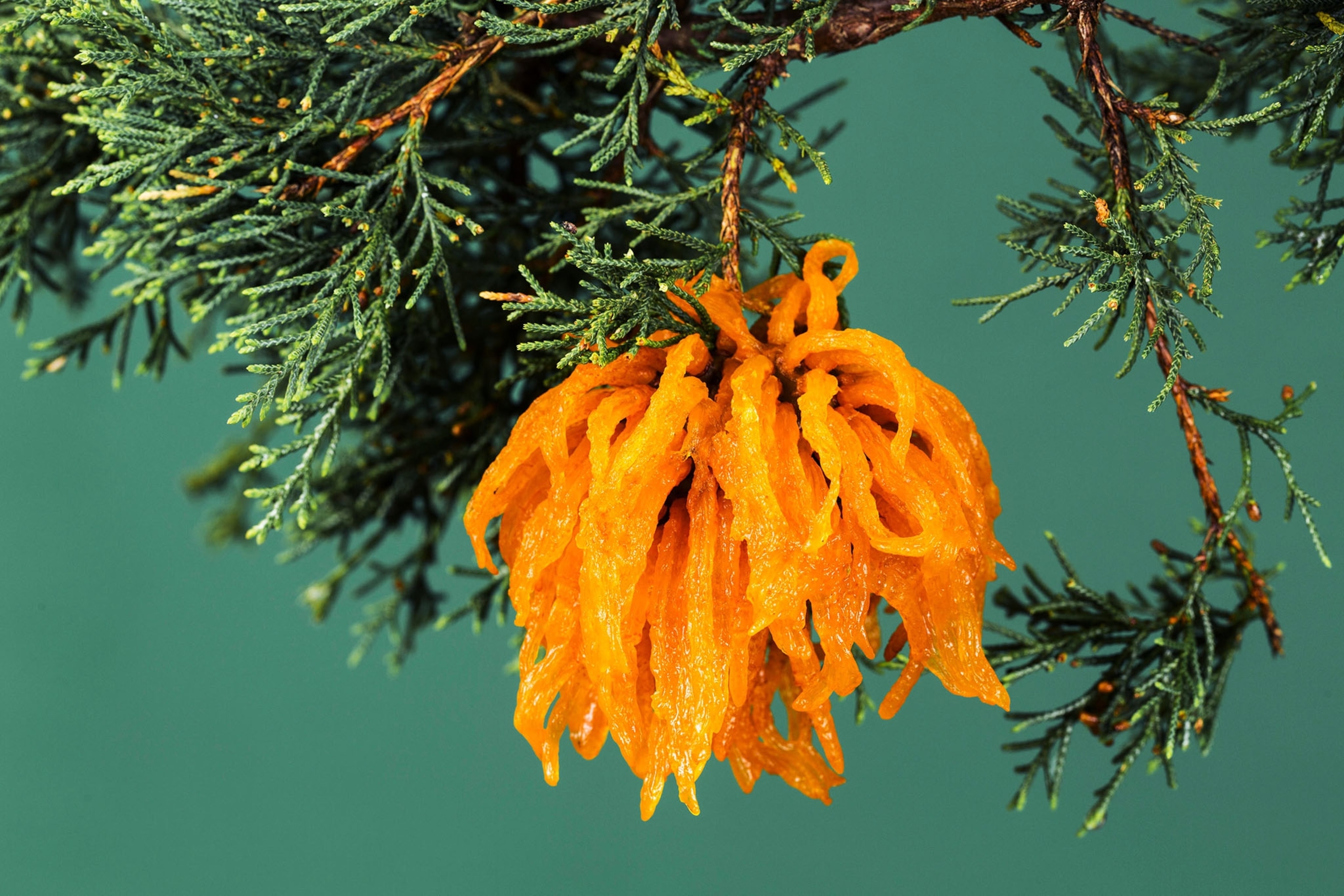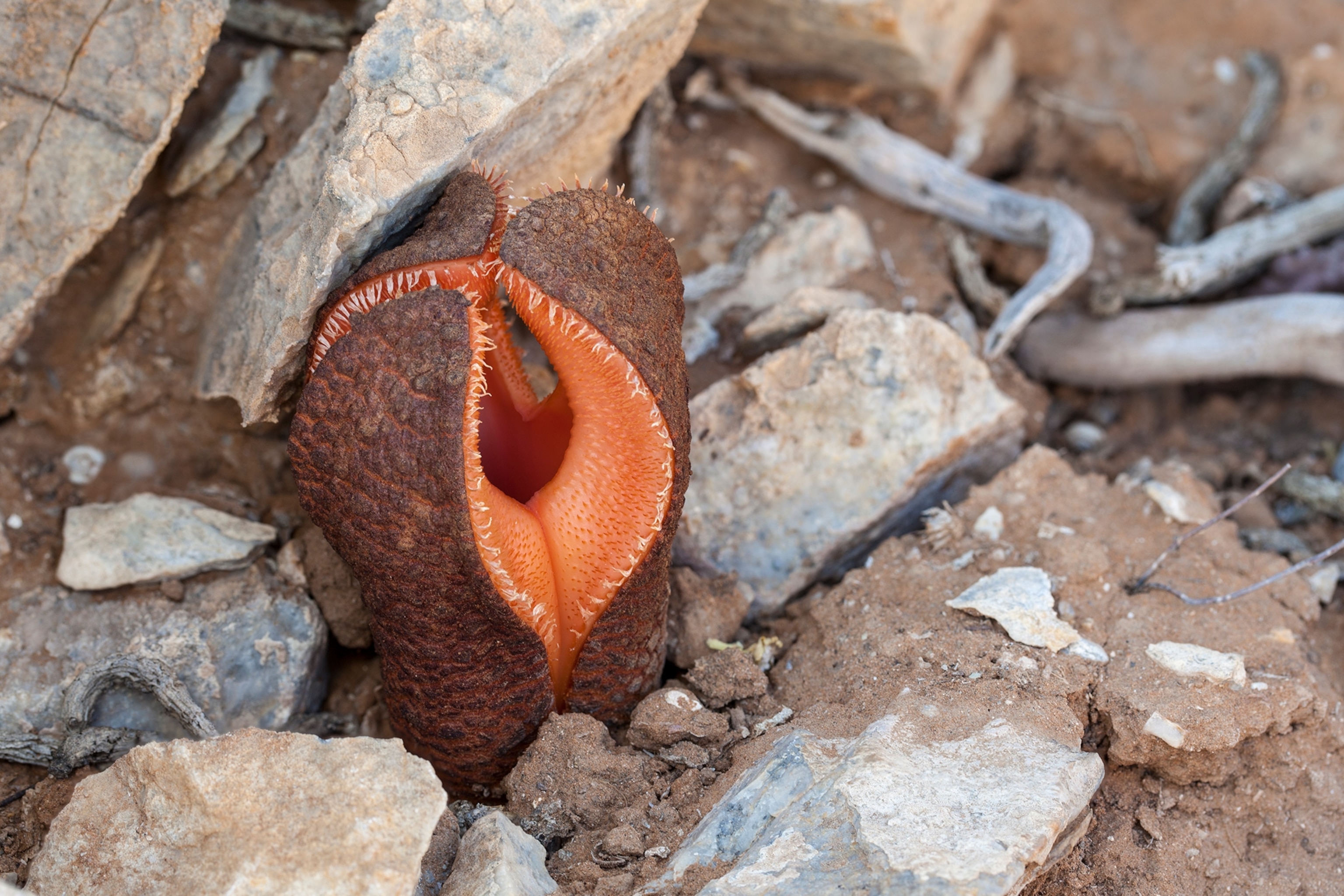Watch: The Devil's Fingers Fungus Will Haunt Your Dreams
Here's why the slime-covered life-form is among the creepiest plants and fungi known to science.
When it comes to designing creepy creatures that lurk outdoors, horror writers could take a page from the plant world.
Imagine roaming a dimly lit forest and finding a stalk covered in eyeballs growing out of the ground, or a foul-smelling “octopus” that looks like it’s reaching for you with slime-covered tentacles.
Some of the most nightmarish creatures on Earth are plants and fungi that can’t chase you but manage to look malevolent anyway. Sometimes there’s logic behind our fears, says fungi researcher Kathie Hodge at Cornell University. Some mushrooms and plants are very toxic, so being repulsed “comes from our deep need to avoid things that will hurt us,” Hodge says.
Others are harmless to humans and simply evolved to look (and sometimes smell) ominous to take advantage of unique ecological resources. Nature is full of these creepy wonders, and we’ve rounded up some of the most fascinating examples.
Octopus Stinkhorn
Also known as devil’s fingers, these mushrooms burst out of thin, leathery “eggs” to reveal bright-red tentacles covered in patches of greenish-black slime.
“They’re fantastic,” Hodge says. The fungi spend much of their time underground, eating bits of wood. When it’s time to reproduce, they grow into the spectacular fingerlike mushrooms and begin oozing slime that smells like rotting flesh—which is filled with the mushroom’s spores.
“They’re not trying to look like people’s fingers,” Hodge says. “They’re hoping flies will come flying over and wade around in the slimy stuff and carry their spores off.” If their offspring are lucky, she says, the flies will land on a nice stick, providing food for the next generation of festering fungi.
Bleeding Tooth Fungus
This fungus also has a more benign name: strawberries and cream. It’s not toxic, but you won't want to eat a bowl of it—by any name, this fungus has a bad, bitter taste.

While they may occasionally look like big, bloody molars, tooth fungi got that name from the way they grow spores. Instead of using feathery gills under a cap, like a Portobello mushroom, tooth fungi grow their spores on tiny tooth-shaped structures.
This tooth fungus excretes red liquid much like sap in a process called guttation, when the fungus absorbs extra water from wet soil. The goo contains antibacterial compounds, but no one knows exactly why.
Doll’s Eyes Plant
This plant, also called white baneberry, grows in the eastern United States. But if you come across it, don’t be tempted to pop an “eye” in your mouth. The entire plant is highly toxic, and chomping its berries can cause cardiac arrest and death.
The black pupil on the eyes is the scar left behind by the flower’s stigma, or female part, after it’s fertilized and forms the berry.
As for why it grows on such a creepy blood-red stalk, that may be a holdover from its more common relative, red baneberry.
Jackal Food Plant
The jackal food plant of southern Africa has a lifecycle every bit as weird as its looks.
You May Also Like

Social media star Alexis Nikole Nelson is teaching a new generation about foraging
Since it spends most of its life belowground, the jackal food doesn’t make chlorophyll and can’t photosynthesize like green plants. Instead, it’s a parasite that sucks nutrients from the roots of other plants.
Even its flowers grow underground and then emerge after a rain. The brown lobes push out of the ground and crack open to reveal the fleshy orange insides.
It smells like a mix of dead animals and feces, which is perfect for enticing flies and dung beetles to act as pollinators. Like the infamous corpse flower, this plant raises its own temperature to better entice flies and possibly to increase the power of its stench. (Read more about the 10-foot-tall corpse flower’s mighty stink.)
Cedar Apple Rust Fungus
One of Hodge’s favorite oddities of the fungal world is a parasite that lives on both apple and cedar trees at different points in its lifecycle. On junipers, it grows into large orange balls that dangle from branches like fruit.
“And then, on a rainy day, big orange googly arms will come out of that thing,” Hodge says. “They’re gelatinous and weird, and they look like weird tree octopi.” The orange tentacles even shrink and swell with rainfall.

The orange balls release spores that travel in the wind to apple trees, where they grow as little orange threads that cause a disfiguring tree disease. Eventually those threadlike fungi make spores that travel back to juniper trees, starting the cycle all over again.
Dog Vomit Slime Mold
This creature isn’t technically a plant or a fungus, but it is one of the most fascinating creepy-looking things in nature.
“It’s basically a giant amoeba,” Hodge says. “Usually, you can’t see an amoeba with the naked eye. But the dog-vomit is the size of a dessert plate.” She adds that she gets a lot of phone calls about the dog vomit slime mold, which often turns up in people’s garden mulch.
“They look weird, and they freak people out.” she says. Even creepier, this huge single-celled blob can crawl.
“They ooze around for a while, and then they convert themselves into spores,” Hodge says. “Although it’s not really a spore,” she adds, “because it hatches like an egg and a little amoeba crawls out.”
That’s the point when I almost dropped the phone. But Hodge was nonplussed. She teaches a summer course about fungi, and she gives her students slime molds to take home and raise. “You can watch them just cruising around on the petri dish, eating oats.”
Some of the students really bond with their slimy little pets, she says: “It’s my campaign to convert people to lovers of stinkhorns and slime molds.”











